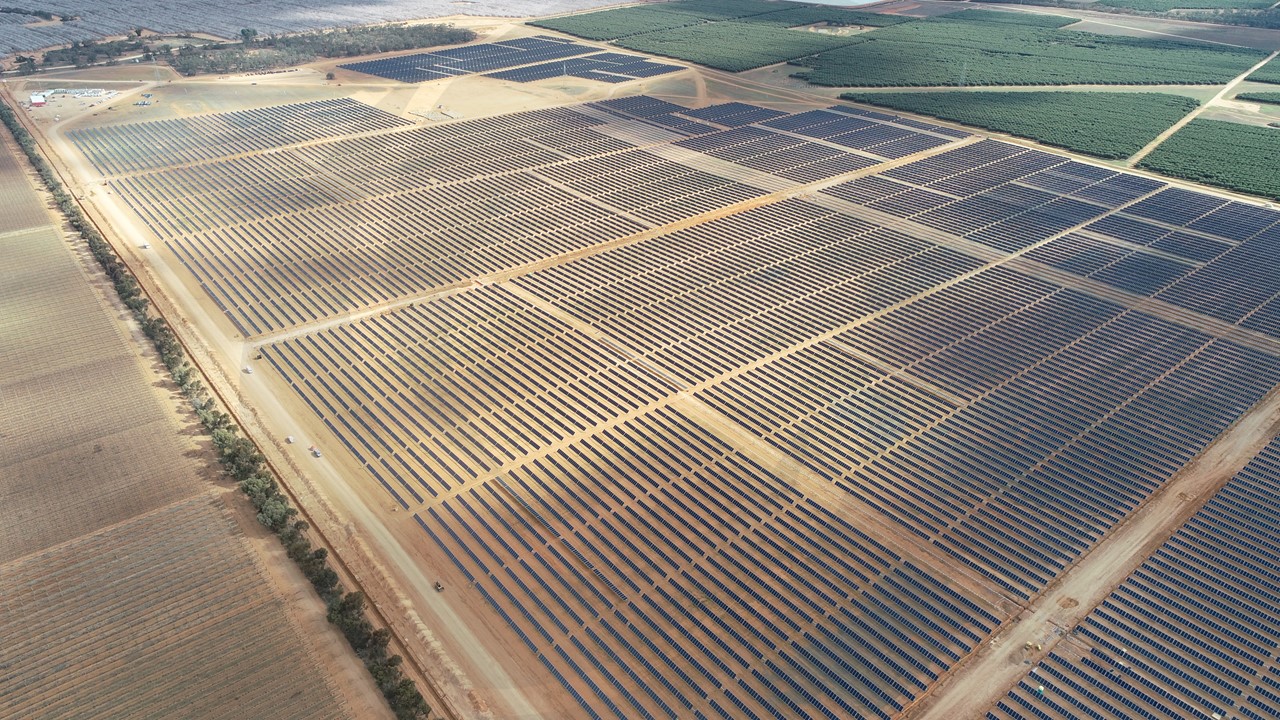
Battery energy storage deployed at Cleve Hill, the largest solar farm planned in the UK to date, will be installed and operated in line with a safety plan agreed with local fire services and the national Health and Safety Executive.
Our sister site Solar Power Portal reported yesterday that co-developers Hive Energy and Wirsol have won planning consent from the government’s energy secretary for the proposed 350MW solar farm, to be built in the county of Kent, in southern England.
Enjoy 12 months of exclusive analysis
- Regular insight and analysis of the industry’s biggest developments
- In-depth interviews with the industry’s leading figures
- Annual digital subscription to the PV Tech Power journal
- Discounts on Solar Media’s portfolio of events, in-person and virtual
The plan has faced some local opposition for its size and location, being located on historic marshlands, but due to its scale has been determined a Nationally Significant Infrastructure Project, the first solar farm to have won such status from the government. To do this, it has had to pass the 50MW capacity threshold. Dr Finlay Colville, head of Solar Media Market Research said that it is still a “gamble” whether the unsubsidised project's proposal will come to fruition, with the present day reality of UK solar farms centred on projects just below that size, with “dozens” of 49.9MW likely to be built in the near future. Nonetheless, Colville said, the plan “is in full accordance with the whole raison d'etre of any Nationally Significant Infrastructure Project (NISP),” with a letter from the government's office for Business, Energy and Industrial Strategy (BEIS) highlighting that Cleve Hill helps meet the “the national need for renewable energy infrastructure”.
One area of concern from campaigners appears to have been the plan’s inclusion of large-scale battery energy storage, with a petition against the development likening it to a “small nuclear bomb” in the event of an explosion. Energy-Storage.news spoke today with Hugh Brennan, managing director at Hive Energy, who said that an Outline Battery Safety Management Plan (OBSMP) has been created specifically for Cleve Hill. Kent Fire and Rescue Service was consulted on this plan, as well as the Health and Safety Executive.
Risk mitigation, fire protection and response strategies
The plan sets out that fire risk will be minimised with measures that include ensuring components and construction techniques used “comply with all relevant legislation,” the inclusion of automatic fire detection and fire suppression systems in the development design and including redundancy in the design aimed at providing “multiple layers of protection”.
Additionally, the development will be designed in such a way that the spread of fire can be restricted, with fire-resistant materials used and “adequate separation between elements of the battery energy storage system (BESS),” while the developers have addressed the fire service’s “recommendations and requirements for emergency response to a fire” and enabled those, while project stakeholders have created a tactical response plan together with the fire service.
Brennan said that electrical safety regulations have also been met, with a “wide and exhaustive range of obligations” to ensure safety in both construction and operation phases for the Cleve Hill Solar Park. Any breach of these obligations would bring about criminal liability.
The Hive Energy managing director told Energy-Storage.news that the technology and battery chemistry to be used “has not been determined yet,” although the application “provides for a containerised solution,” which, Brennan said is “likely lithium-ion, but not confirmed yet”. The battery is planned for 700MWh of capacity, which implies two hours’ duration of storage.
The role the battery will play
According to Brennan, the battery will back up and balance variable solar generation through time shifting, will shave some of the local network’s peak demand – which is also a vital means for reducing the role played by fossil fuels on the grid – and provide unspecified “essential services to National Grid to help operate the transmission system safely and securely”.
A supplier for the battery system has yet to be selected. However, Hive Energy’s Hugh Brennan said that the developers have been working with Leclanché on a “preferred partner” basis during the development process so far. Brennan notes that Switzerland-headquartered Leclanché has over 100 years experience “with battery and energy storage innovation”.
Leclanché also worked with Hive Energy and Wirsol on the safety aspects of the project’s design, a role which has included providing safety standards documentation, which Brennan said has been detailed, with developers and the “Swiss battery specialist” alike putting “the safety of communities and workforce at the core of their designs”.
Leclanché also attended stakeholder and community hearings in September last year, “and answered questions from residents and local stakeholders about the energy storage technology and explained the stringent security requirements that Leclanché implement, which adhere to global safety management regulations and requirements,” Hugh Brennan said.
Additional reporting by Molly Lempriere.






